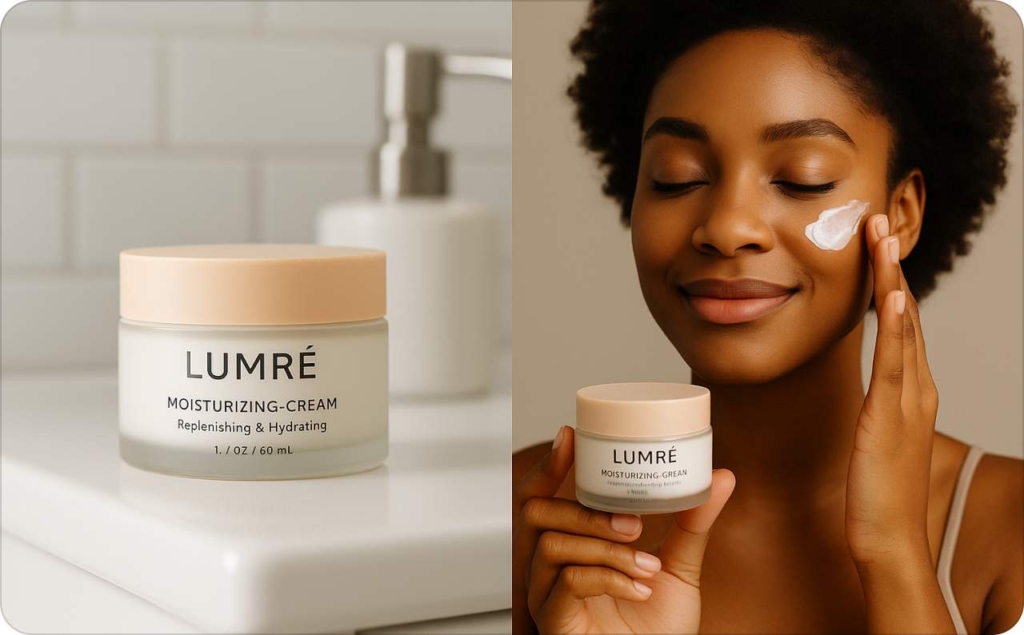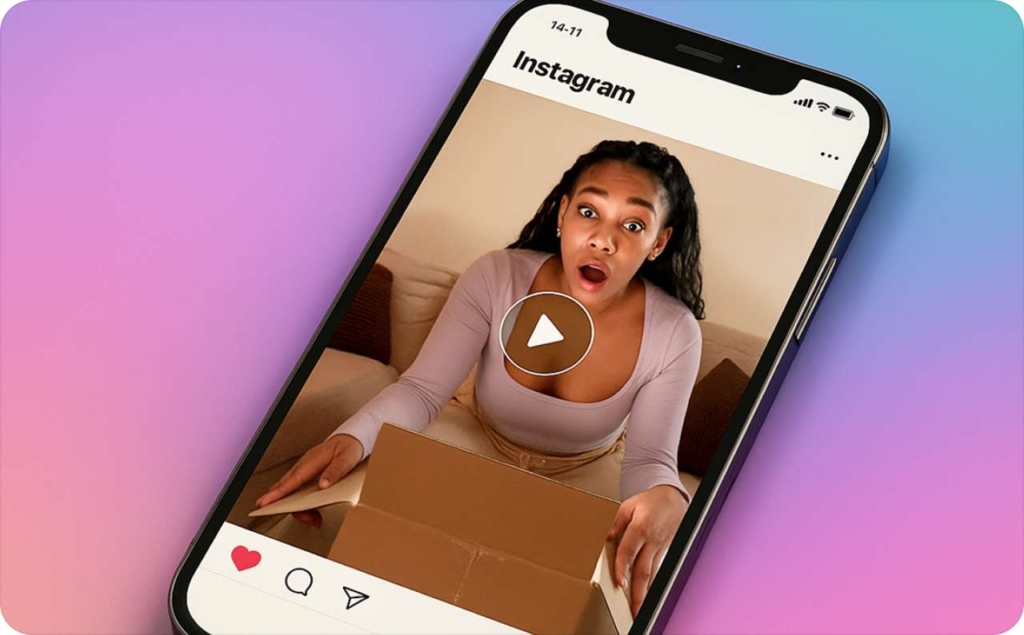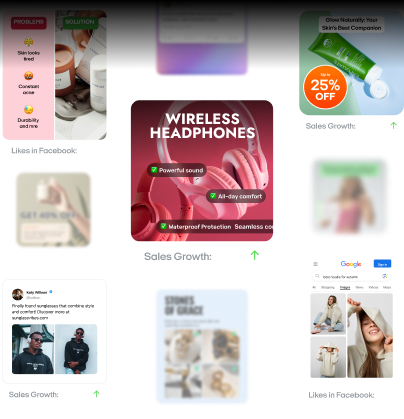Creatify alternatives: 17+ tools to try in 2025
Searching for the best Creatify alternatives to upgrade your creative workflow? Zeely AI has analyzed leading creative automation tools and learned what features truly drive performance, helping you choose the smartest alternatives.
Pricing caps, clunky steps, and a thin UGC focus push many teams to look beyond Creatify. If you run an SMB, an e-commerce shop, or you’re a marketer, you need an AI ad generator that feels fast and obvious. Seventy-eight percent of customers want a consistent brand experience across every channel. Your ad tool should keep fonts, colors, and tone aligned while helping you ship new creative in minutes. This guide covers the best Creatify alternatives in 2025 across ad creative tools, AI creative tools, and ad automation tools.
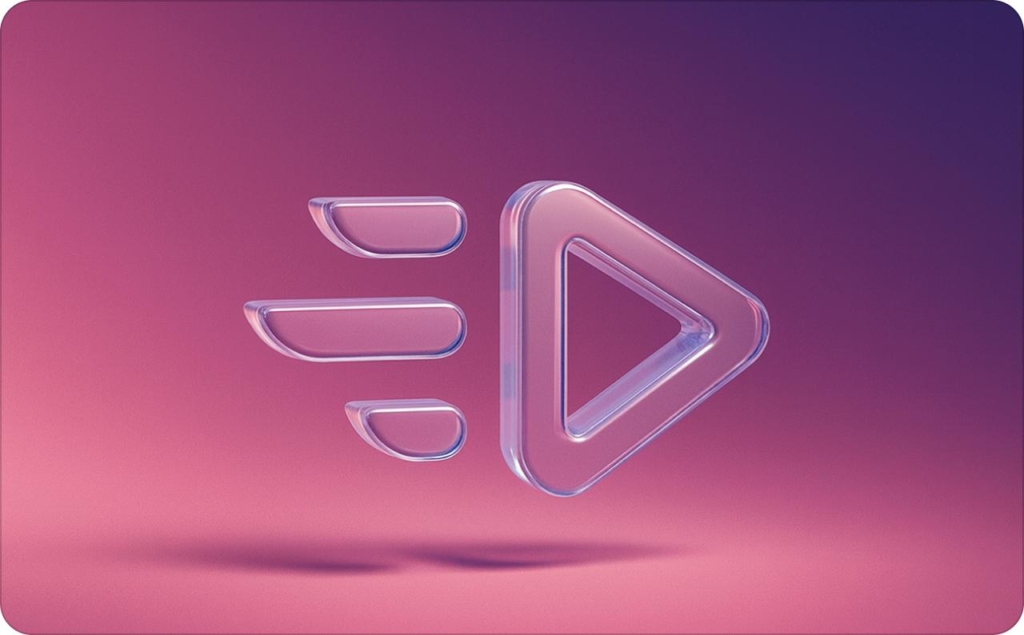
How to choose the right Creatify alternative
When choosing top Creatify alternatives, it’s less about chasing feature lists and more about finding what removes friction from your workflow. The right tool should feel obvious from the first click, not like another platform to wrestle with. Salesforce’s 2025 State of the Connected Customer finds 85% of customers expect consistent interactions across departments, which is another signal to favor tools that remove handoffs and rework.
A few points to compare when looking at Creatify competitors:
- Cost transparency: predictable pricing matters more than flashy upsells
- Ease of use: if it takes hours to learn, it slows your team down
- Output quality: sharp exports make ads look polished without extra editing
- Ad readiness: formats built for TikTok, Facebook, and Instagram keep campaigns moving
- Speed per video: seconds saved here add up across dozens of creatives
- Integrations: simple connections to e-commerce or analytics help everything run in sync
Focus on these Creatify alternative features and you’ll quickly see which tools don’t just generate ads, but actually make the process smoother for you and your team.
Zeely AI for SMB ad creation
When small businesses weigh a Zeely Creatify alternative, they’re usually asking: can I make scroll-stopping ads without the cost or lag of agencies? With Zeely AI, the answer is yes.
Here’s why it stands out as the best tool for AI UGC ads:
- From script to voiceover to video in minutes: add product, and Zeely turns it into a finished piece, no editing software needed
- UGC-style templates tuned for TikTok, Facebook, and Instagram: ads look native to the feed, not like generic stock
- Full control over look and feel: swap voices, styles, or layouts to match your brand tone
- Affordable at scale: unlike agencies, costs don’t spike every time you need fresh creative
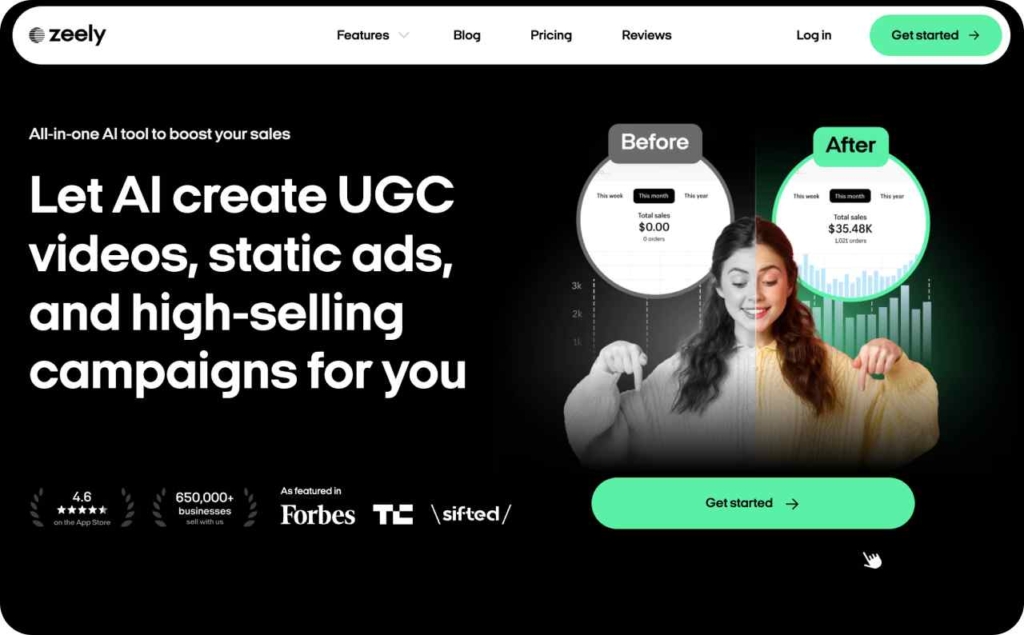
Real SMB proof
One e-commerce shop owner used Zeely video ads to refresh campaigns weekly instead of monthly. The faster turnaround dropped cost-per-lead by 27% while keeping creative quality high. What once took an external team weeks now happens in a single afternoon.
For owners who want a tool that’s simple, supportive, and built to deliver ad-ready output, Zeely makes choosing Creatify alternatives easy. You get the polish of an agency workflow without the wait or price tag.
17 more Creatify alternatives to consider
Zeely is a strong fit if you need fast, UGC-ready ads at scale. But some businesses like to compare a wider field before committing. This list highlights the best Creatify competitors 2025, with each tool covering a different angle, whether you want tighter mobile workflows, advanced video editing, or shoppable content features. By looking at these top Creatify alternative tools, you’ll see how Creatify similar tools compare in strengths, weaknesses, and use cases.
JoggAI
When comparing Jogg AI vs Creatify, the clear advantage is speed. JoggAI can turn a product page or URL into a ready-to-run video ad in seconds, making it a practical JoggAI Creatify alternative for teams that value quick UGC-style output without filming.
Strengths: more than 450 AI avatars, multilingual voice cloning, and instant script-to-video automation. Flexible pricing tiers make it accessible to small businesses testing AI creative tools before scaling.
Weaknesses: avatar-led ads feel less authentic than raw UGC clips, editing controls are lighter, and higher-tier features can raise costs.
Best use case: brands that need fast, professional video ads in multiple languages, but don’t require the raw, selfie-style content that TikTok often rewards.
Pricing:
- Free: $0/month
- Starter: $24/month
- Creator: $36/month
- Team: $46/seat/month
- Enterprise: Custom pricing
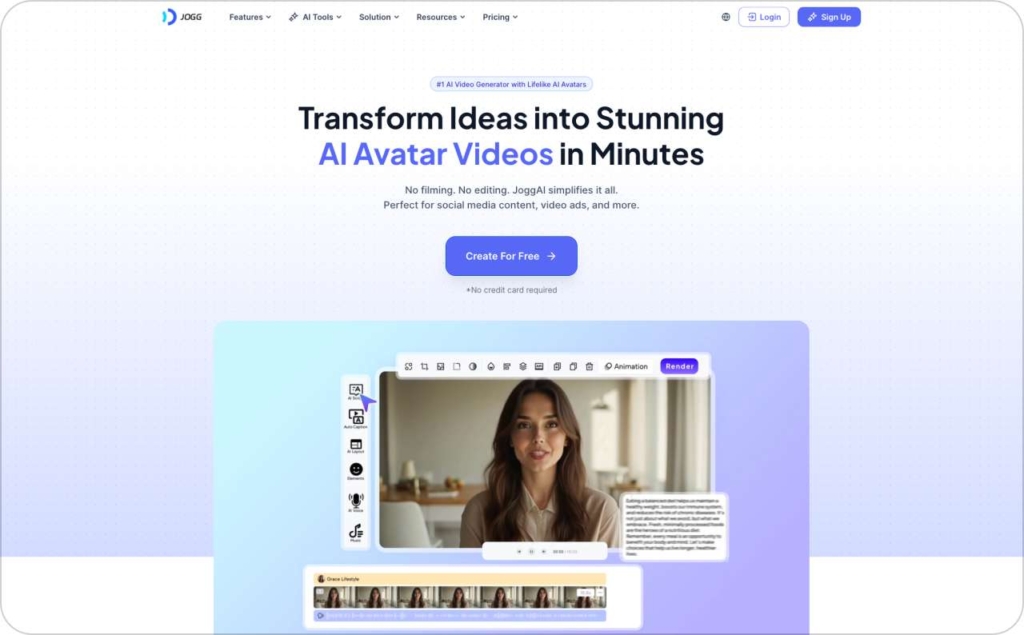
Predis.ai
If you compare Predis.ai vs Creatify, Predis leans deeper into social commerce and content automation, making it a worthwhile Predis AI Creatify alternative when you want more than just ads.
Strengths: Predis focuses on social commerce, creating UGC videos, product ads, and supporting multi-format content all in one tool. It auto-resizes creatives, includes built-in scheduling and publishing, and supports over 18 languages. It also offers AI product photoshoots and generates ad copy and captions alongside visuals.
Weaknesses: Its all-in-one approach can dilute specialization — ad creative features may lack fine controls compared to dedicated video tools. And when your campaign needs raw, unpolished UGC or advanced custom edits, it might feel limiting.
Best use case: E-commerce brands that need a unified tool for product ads, UGC content, scheduling, and content repurposing, especially when you want to cut platform switching and streamline social commerce workflows.
Pricing:
- Core: $19/month
- Rise: $40/month
- Enterprise+: $212/month
- Enterprise: Custom pricing
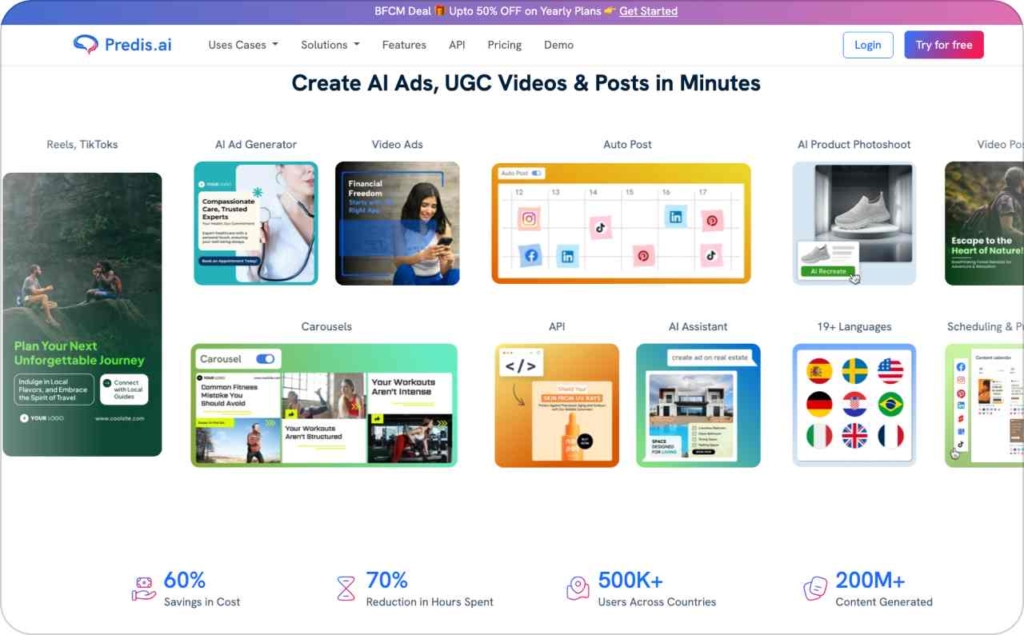
Tagshop.ai
When looking at Tagshop AI vs Creatify, the difference is clear: Tagshop is built for e-commerce, not just ad production. As a Tagshop alternative to Creatify, it focuses on turning product pages directly into shoppable, UGC-style video ads.
Strengths: It can auto-generate videos from a URL, pulling in images and details to build a script. The platform offers AI avatars, lip-syncing, custom avatar creation, and bulk video generation, so e-commerce stores can refresh campaigns fast across TikTok, Facebook, or YouTube.
Weaknesses: Videos rely on avatars, which can feel less spontaneous than raw UGC, and customization options for complex edits are limited.
Best use case: Online stores that want shoppable ads created directly from product links, with minimal manual input.
Pricing:
- Free: $0/month
- Starter: $23/month
- Growth: $79/month
Scale: $199/month

TopView.ai
When comparing TopView AI vs Creatify, the standout difference is automation. TopView focuses on scaling e-commerce ads with ready-made templates, making it a strong TopView AI Creatify alternative for brands that want speed and volume.
Strengths: It uses data from millions of viral YouTube and TikTok ads to auto-generate scripts and storyboards. Product-URL to video workflows are available for Shopify, Amazon, and eBay. The platform includes avatars, multilingual voiceovers, captions, and clip-matching tools, aiming to produce ad creatives five times faster at a fraction of traditional costs.
Weaknesses: Creative flexibility is limited — fine-tuned edits, gestures, and unique visuals aren’t its focus. Mobile support is also restricted since it’s web-only.
Best use case: E-commerce businesses that prioritize automation and fast campaign refreshes over deep manual control, especially when running large volumes of platform-specific ads.
Pricing:
- Free: $0/month
- Pro: $18/month
- Business: $45/month
- Enterprise: Custom pricing
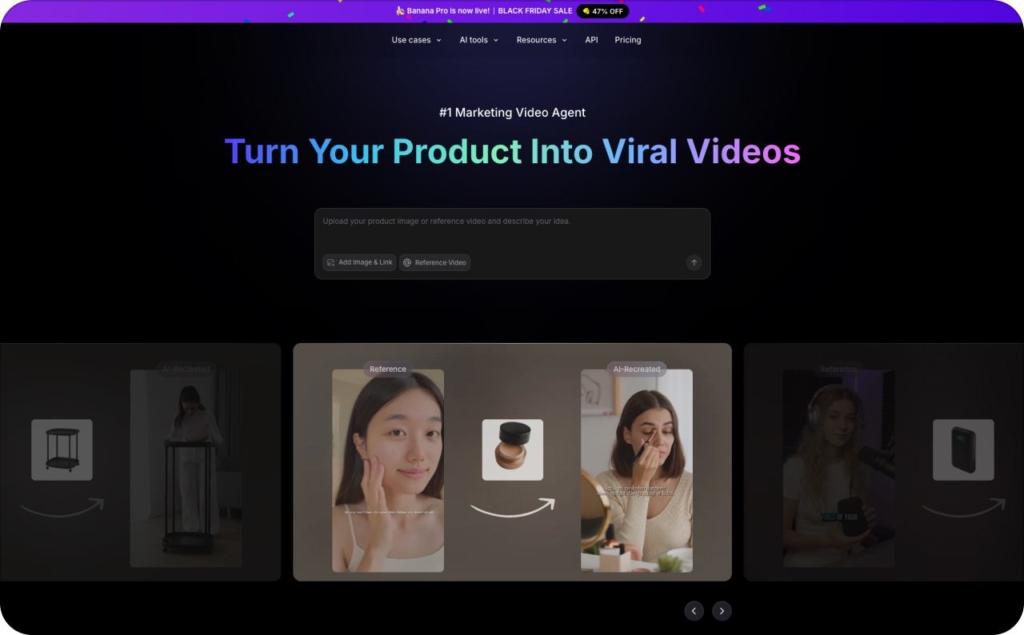
InVideo
When weighing InVideo vs Creatify, InVideo is a broad, all-purpose video editor rather than a niche ad tool. That makes it a solid InVideo Creatify alternative if you want flexibility more than UGC focus.
Strengths: InVideo offers over 5,000 templates, drag-and-drop editing, AI-powered text-to-video, background removal, and a massive stock media library. Its “Magic Box” feature lets you edit with natural prompts like “remove this scene” or “change the voice,” which speeds up workflow.
Weaknesses: Because it’s built for versatility, it’s less tuned for authentic, selfie-style UGC ads. Fine-grain edits like gesture timing are harder, and the free plan comes with watermarks and limited minutes.
Best use case: Teams that need a generalist tool for ads, promos, or explainers, where broad creative control matters more than raw UGC authenticity.
Pricing:
- Plus: $28/month
- Max: $50/month
- Generative: $100/month
- Team: $899/month

Kapwing AI
Rather than positioning itself strictly as an ad generator, Kapwing frames itself as a collaborative video studio. That distinction makes it a notable Kapwing Creatify competitor for teams that need editing power with AI assist baked in.
Strengths: The platform offers AI tools like Smart Cut to trim silences, auto-subtitles, background removal, resizing, and text-to-video with b-roll. Collaboration is a core feature, shared workspaces, team comments, and brand kits help keep multiple creators aligned on one project.
Weaknesses: Kapwing’s versatility means it’s less specialized for raw UGC-style ads. It doesn’t have avatar-led generation, and free accounts carry watermarks and usage caps.
Best use case: Teams working together on branded content and ads who want flexible editing plus AI automation, all in one tool.
Pricing:
- Free: $0
- Pro: $16/month
- Business: $50/month
- Enterprise: Custom pricing

Veed.io
When comparing Veed.io vs Creatify, Veed positions itself less as an avatar tool and more as a fast, editor-friendly platform. That makes it a practical Veed Creatify alternative when captions, subtitling, and quick polish matter most.
Strengths: Veed auto-generates subtitles with high accuracy in over 125 languages. You can style, animate, or highlight text to create dynamic captions. The editor also supports quick trimming, overlaying text, sound cleanup, and resizing, so teams can prepare ad-ready clips without a steep learning curve.
Weaknesses: Veed doesn’t focus on avatar-led content or scripted ad automation. Advanced features like dynamic captions or bulk exports are locked to higher plans.
Best use case: Ideal for brands that need clear, on-brand captions and fast edits, especially for campaigns where many viewers watch with the sound off.
Pricing:
- Lite: $19/month per editor
- Pro: $49/month per editor
- Enterprise: Custom pricing
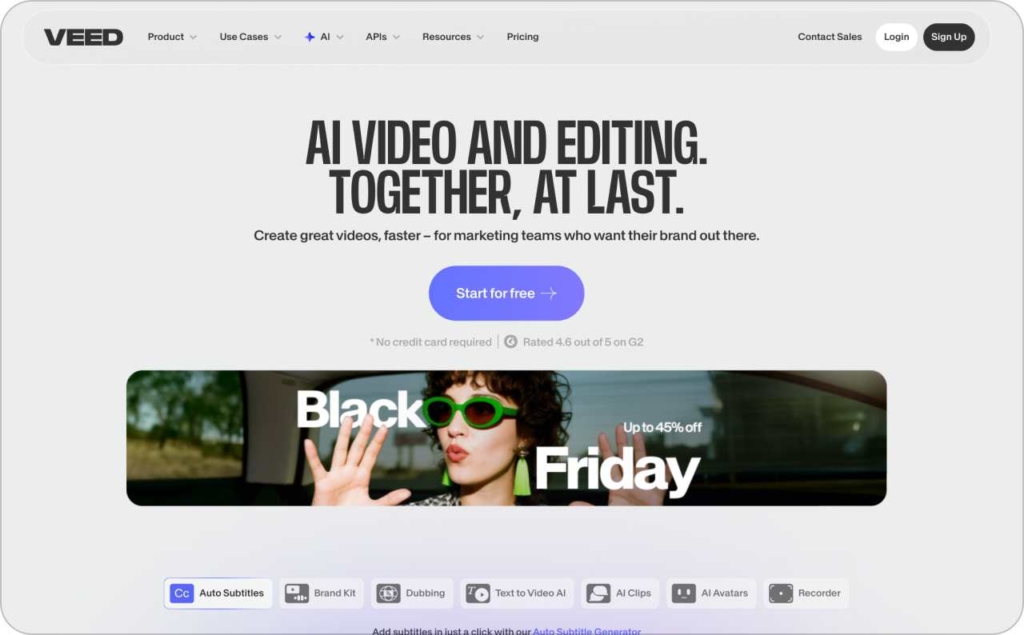
Runway
Among creative AI tools, Runway takes the most experimental angle. That makes it a different kind of Runway Creatify alternative — less about quick templates, more about pushing visuals further. In a Runway vs Creatify comparison, it’s the choice for teams that want cutting-edge effects instead of standard ad workflows.
Strengths: Gen-4 ensures characters and objects stay consistent across scenes. Aleph mode lets you describe edits in plain language, from changing styles to shifting camera paths. You can also swap styles, manipulate objects, and re-generate shots from new angles.
Weaknesses: The platform has a steeper learning curve, higher credit usage for advanced features, and lacks the plug-and-play UGC ad focus of Creatify.
Best use case: Brands or creators aiming for immersive storytelling or experimental ads where visual innovation matters more than rapid UGC refreshes.
Pricing:
- Free: $0 per editor/month
- Standard: $12 per user/month
- Pro: $28 per user/month
- Unlimited: $76 per user/month
- Enterprise: Custom pricing

Descript
In the Descript vs Creatify comparison, Descript is less about quick ad generation and more about precision media editing. As a Descript Creatify competitor, it’s a go-to for teams that need transcription, cleanup, and control.
Strengths: Descript transcribes audio and video instantly, letting you edit content by editing text. Its toolkit includes Overdub for voice cloning, Studio Sound for background noise cleanup, filler-word removal, multitrack editing, captions, and translation in multiple languages. Screen recording and quick publishing add to its versatility.
Weaknesses: Descript doesn’t focus on UGC ad creation, bulk social templates, or avatar-led ads. It’s geared toward refinement, not rapid production.
Best use case: Brands or creators needing polished edits, transcription accuracy, or repurposed video/audio content with professional quality.
Pricing:
- Hobbyist: $24 per person/month
- Creator: $35 per person/month
- Business: $65 per person/month
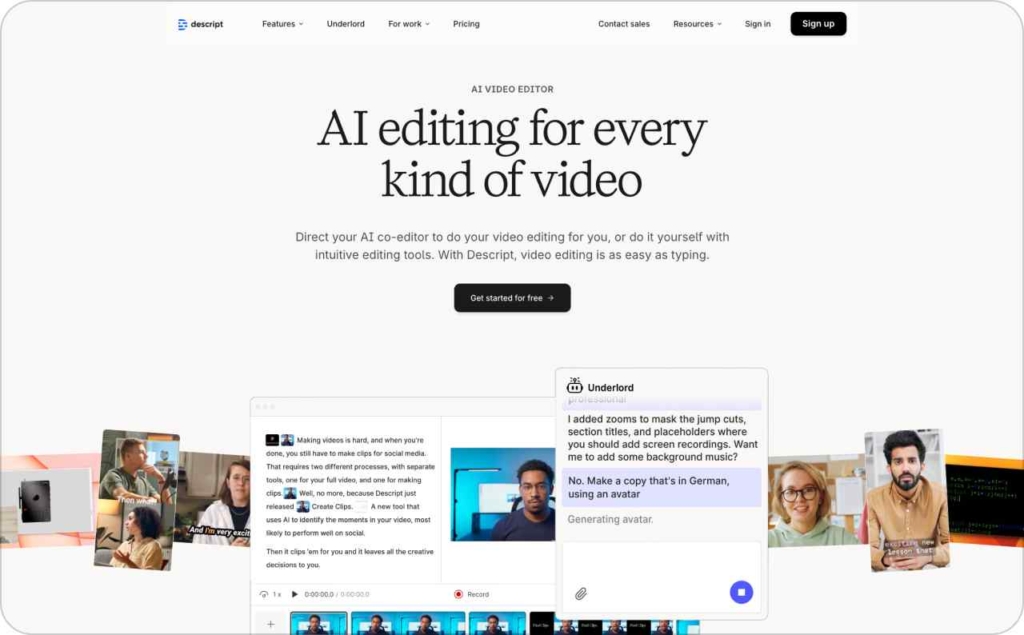
Synthesia
In the Synthesia vs Creatify comparison, Synthesia is all about avatar-led spokesperson content. It’s a strong Synthesia Creatify alternative when you need professional talking-head videos without hiring talent or filming.
Strengths: The platform offers more than 230 avatars and support for 140+ languages. With the latest Express-2 update, full-body avatars move naturally with speech, adding gestures and improved expression. Other features include custom avatar creation, branded templates, automatic captions, video versioning, branching interactions, and collaboration for teams.
Weaknesses: It’s less suited for raw UGC-style ads. Avatars can feel too polished, and creative quirks or highly custom motions are harder to capture.
Best use case: Businesses wanting consistent, scalable spokesperson-style videos for ads, training, or explainers.
Pricing:
- Basic: Free
- Starter: $29/month
- Creator: $89/month
- Enterprise: Custom pricing
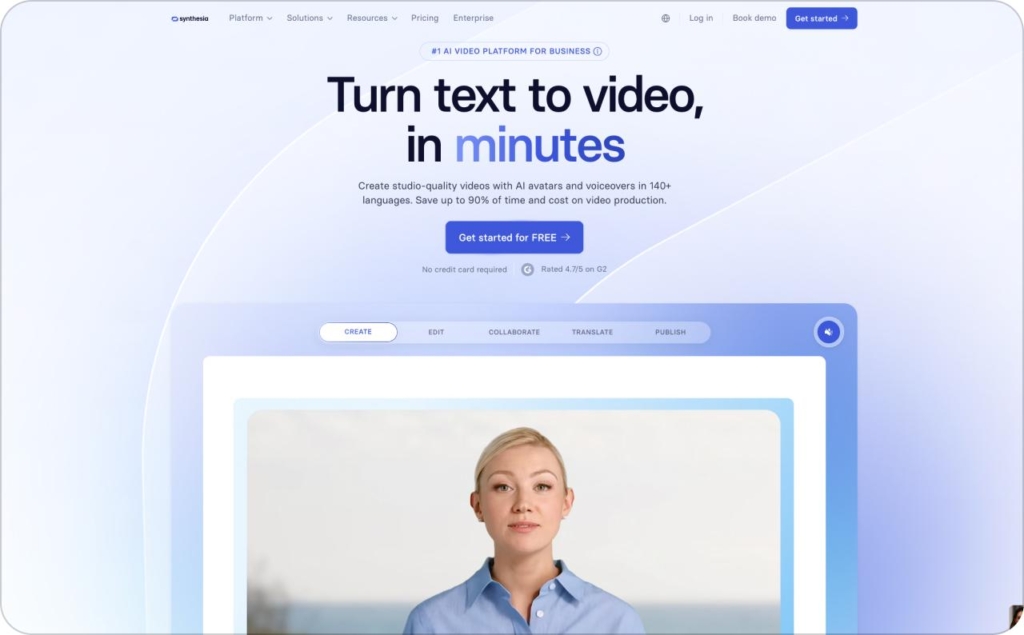
HeyGen
When you pit HeyGen vs Creatify, the real strength is HeyGen’s multilingual avatar system, making it a strong HeyGen Creatify alternative if you want broad reach in many languages.
Strengths: It supports over 150 languages and offers a “Multi-Lingual Player” that lets viewers switch between language versions in one link. HeyGen uses AI avatars and voice cloning to adapt scripts and lip sync in new languages automatically. Its library of avatars plus custom avatar options give flexibility for branding and personality.
Weaknesses: It leans heavily on avatars, so it may feel less genuine than recorded UGC. Deep visual edits or spontaneous movement tweaks can be harder. Also, some free or entry tiers limit video duration, translations, or output quality.
Best use case: Brands needing spokesperson-style videos that speak to global audiences, e.g. product demos, explainers, or cross-market ad campaigns where consistent avatar presence and multilingual output matter.
Pricing:
- Free: $0/month
- Creator: $29/month
- Team: $39/seat/month
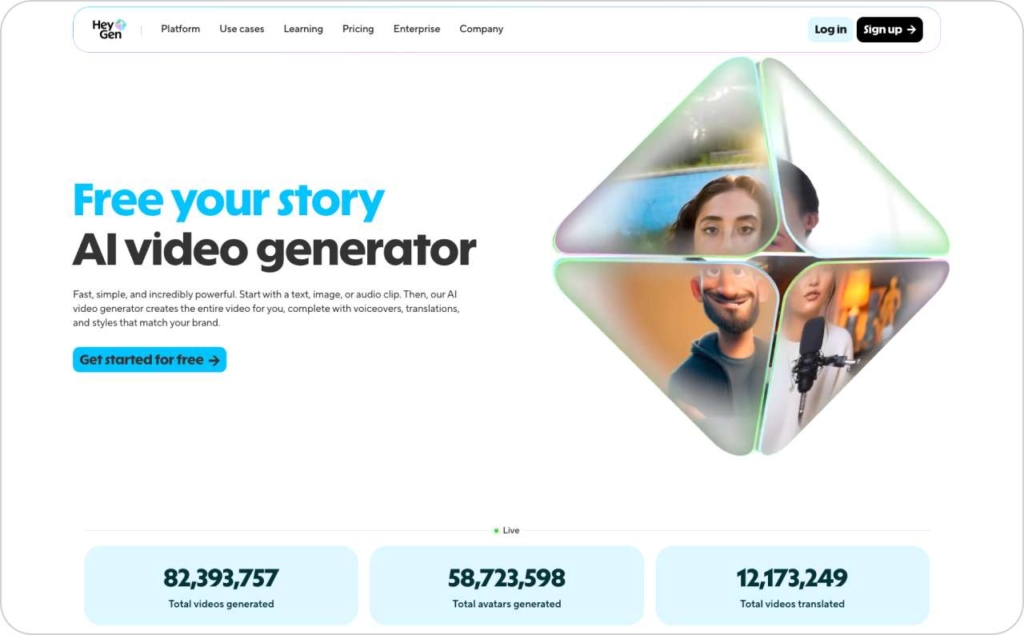
Colossyan
Compared to Creatify, Colossyan leans into learning and training content, making it a standout Colossyan Creatify competitor when your priority is internal or instructional video.
Strengths: It turns scripts, PDFs, or slides into training videos narrated by AI avatars in 100+ languages. Its Instant Avatar feature builds lifelike digital versions of yourself from 20-30 seconds of footage, complete with gestures and voice cloning. That lets brands scale video content without ongoing filming. Colossyan also supports avatar conversations, branded avatars, voice cloning, and translating localization.
Weaknesses: Since it’s built for structured training, it’s less focused on raw UGC-style ad content and spontaneous styles. Custom ad sequencing, trend-based social edits, or creative quirks may feel constrained.
Best use case: Companies that need efficient, scalable training, onboarding, or explainer videos, especially when personalization, localization, and consistency matter more than TikTok-style spontaneity.
Pricing:
- Starter: $19/month
- Business: $70/month
- Enterprise: Custom

OpusClip
In the OpusClip vs Creatify comparison, OpusClip positions itself around content repurposing rather than ad generation. That makes it a solid OpusClip Creatify alternative if you’ve already got long-form material and need to break it down into short, ad-friendly formats.
Strengths: Its AI identifies the most engaging moments, cuts them into short clips, and adds dynamic captions. This makes it easy to turn webinars, interviews, or podcasts into TikToks, Reels, or YouTube Shorts. The process is fast, automated, and designed to maximize reach without extra filming.
Weaknesses: OpusClip doesn’t specialize in avatar-led ads or fully scripted creative. Manual editing depth is limited, so it’s less ideal if you need custom storytelling.
Best use case: Perfect for brands or creators who want to multiply the value of long videos by quickly producing multiple snackable clips optimized for social platforms.
Pricing:
- Starter: $15 USD/mo
- Pro: $29 USD/mo
- Business: Custom pricing and packs

QuickVid AI
In the QuickVid AI vs Creatify comparison, QuickVid is all about speed. It’s built to deliver instant short-form ads, making it a handy QuickVid Creatify competitor when fast turnaround is more important than deep editing.
Strengths: QuickVid supports over 200 AI avatars and can generate scripts from minimal input. It automates clip discovery, applies dynamic layouts, adds subtitles, and even offers scheduling tools to push content directly to social platforms. The workflow is focused on producing UGC-style videos in minutes.
Weaknesses: Creative control is limited since much of the process is automated. Lower tiers may restrict video length, avatar selection, or export quality.
Best use case: Marketers and e-commerce teams who want to repurpose or quickly spin up product videos into social-first ad clips without heavy editing.
Pricing:
- Starter: $29/m
- Creator: $59/m
- Team: $109/m
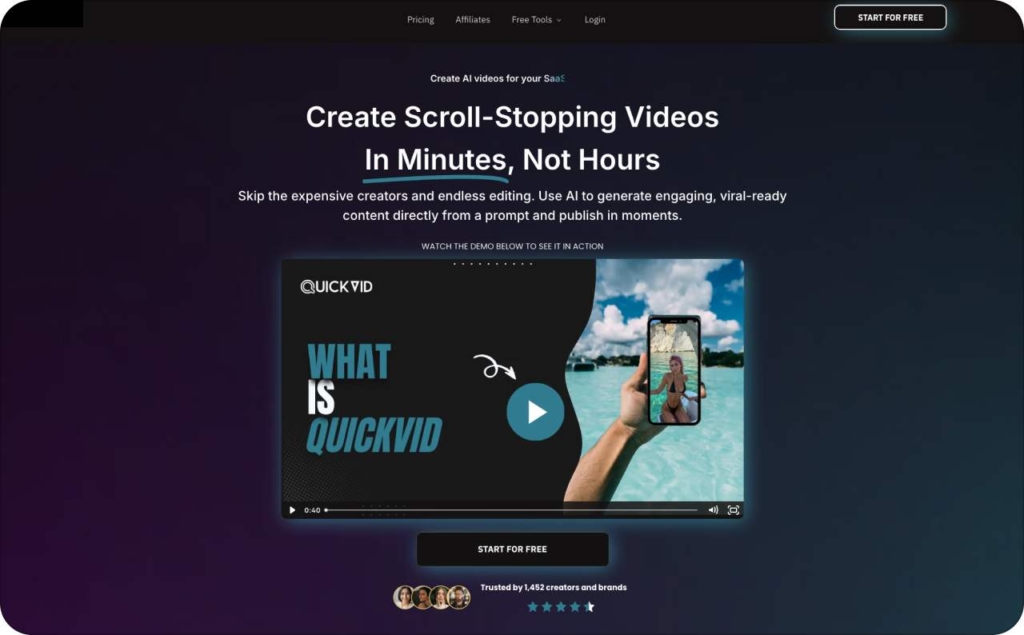
Pictory AI
In the Pictory vs Creatify comparison, Pictory is built for repurposing long-form content into short, shareable videos. That makes it a practical Pictory AI Creatify alternative when your focus is turning existing material into fresh ad assets.
Strengths: Pictory automatically analyzes long videos and pulls out highlights, converting them into short clips optimized for TikTok, Instagram, or YouTube. It also supports script-to-video, blog-to-video conversion, AI voiceovers, captions, and resizing for multiple platforms. This makes it ideal for stretching content without filming from scratch.
Weaknesses: Because it leans heavily on repurposing, visuals can feel stock or generic. It lacks the spontaneity of UGC ads, and editing flexibility is narrower than dedicated creative tools.
Best use case: Brands or creators wanting to maximize the value of webinars, podcasts, or articles by quickly producing multiple short-form videos for social media campaigns.
Pricing:
- Starter: $19/month
- Professional: $29/month
- Team: $99/month
- Enterprise: Custom

Lumen5
Lumen5 positions itself as a content marketing tool rather than a pure ad generator, which makes it a practical Lumen5 Creatify alternative when the goal is repurposing written content into video. In a Lumen5 vs Creatify comparison, it stands out for blog-to-video workflows.
Strengths: You can paste in a blog post or article, and its AI will pull key sentences, match them with visuals, and generate a video storyboard. The platform offers drag-and-drop customization, access to stock media, AI voiceovers, and exports in multiple aspect ratios for different platforms.
Weaknesses: Lumen5 isn’t designed for UGC-style ads. Outputs can feel generic, and more complex ad narratives may require manual refinements.
Best use case: Ideal for content marketers and small teams that want to extend the reach of blog posts, articles, or newsletters by converting them into engaging social-ready videos without starting from scratch.
Pricing:
- Basic: $19 USD per month, billed yearly
- Starter: $59 USD per month, billed yearly
- Pro: $149 USD per month, billed yearly
- Team: Custom

KreadoAI
When comparing KreadoAI vs Creatify, the biggest difference is style. KreadoAI builds avatar-driven videos with natural voices, making it a practical KreadoAI Creatify alternative for polished, professional ad content.
Strengths: more than 1,000 AI avatars, 40,000 voices in 140+ languages, plus custom avatar and voice cloning. It also converts text, slides, images, or PDFs into videos and includes editing tools like background removal, transitions, and captions.
Weaknesses: less authentic for TikTok-style UGC, fewer granular editing options, and higher costs for advanced avatars.
Best use case: brands needing multilingual spokesperson ads, training, or explainers where scale and polish matter most.
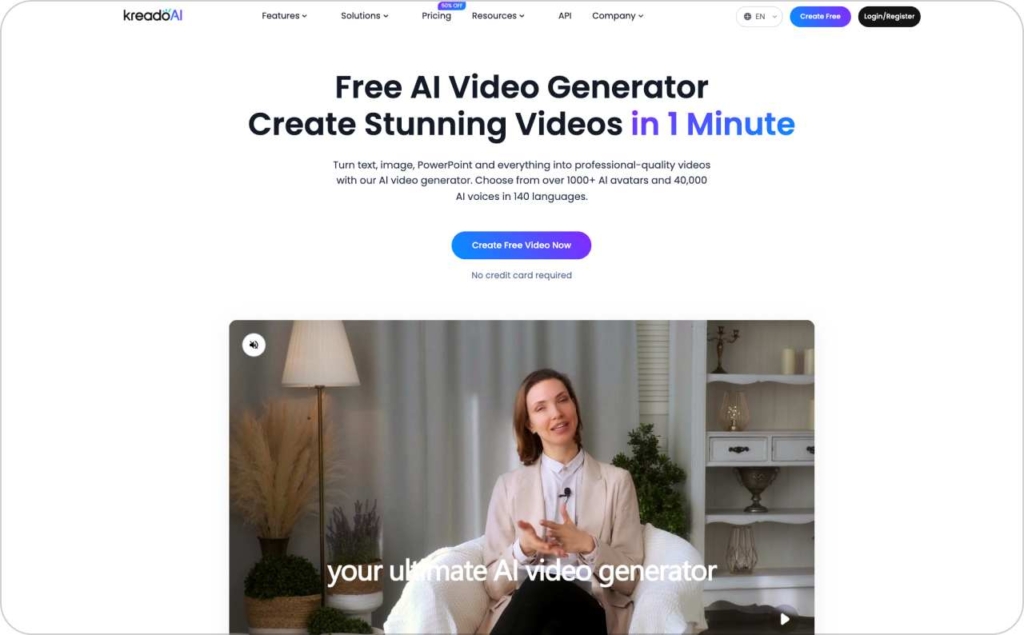
Arcads
Unlike some platforms that focus on desktop editing, Arcads was built with a mobile-first workflow in mind. That makes it a handy Arcads Creatify competitor for founders and marketers who want to build and ship ads on the go.
Strengths: Arcads can transform text into UGC-style videos in minutes, offering 300+ AI actors and support for 35+ languages. It also includes script optimization, voice and intonation controls, and batch creation — helpful when testing multiple ad versions at once.
Weaknesses: Ads lean on avatars, so they lack the raw authenticity that TikTok often rewards. Editing flexibility is limited, and entry-level tiers restrict actor access and output volume.
Best use case: Brands or small teams needing quick, repeatable ad production from a phone, especially when frequent creative refreshes are key.
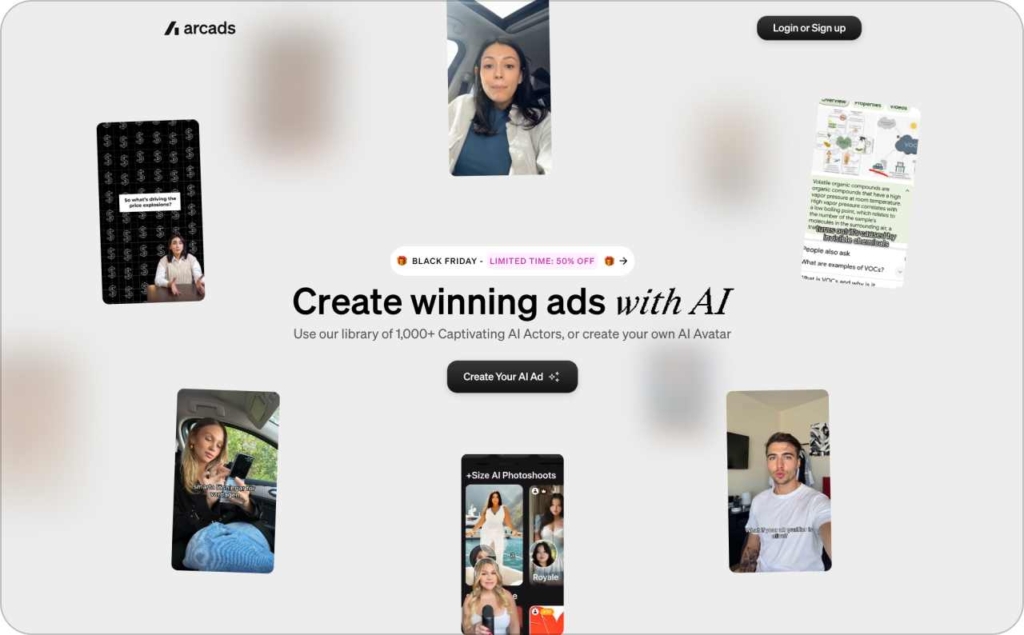
Which Creatify alternative fits your needs?
Different Creatify competitors are built for different jobs. Instead of asking “what’s best overall,” it’s smarter to match the tool to the problem you’re solving, whether that’s running an online shop, building TikTok ads, or handling client work.
Budget startups
When every dollar counts, free or low-cost tiers help you test ideas without pressure. Tools like Zeely AI, JoggAI or KreadoAI let you experiment with formats and styles before you commit to higher plans.
E-commerce catalogs
If you’re juggling dozens of SKUs, efficiency is everything. Tagshop.ai, OpusClip, and TopView.ai can turn product URLs into videos and generate multiple ad variations quickly — ideal for stores that need constant refreshes.
TikTok-first & UGC style
TikTok rewards authenticity. Tools that keep things raw, like Kapwing AI, Veed.io, or InVideo, make it easier to build face-forward clips with captions and voiceovers that feel native to the feed.
Agencies & high volume
Managing clients means you need scale, collaboration, and version control. Zeely sets the standard for producing ads at pace, while KreadoAI, Synthesia, and Runway add options for avatars, spokesperson videos, and experimental creative.
Quick tip: identify your bottleneck first. If editing slows you, lean on Kapwing or Veed. If throughput is the issue, catalog-focused tools will give you more leverage.
FAQs
What are the best Creatify alternatives in 2025?
The strongest Creatify competitors combine AI ad generation with UGC-ready formats. Zeely stands out for small teams that need quick, consistent ads. Other solid options include video-first editors like Pictory, paid-social specialists like AdCreative.ai, and automation platforms that cover cross-channel scheduling. The right fit depends on whether you value speed, creative control, or built-in analytics most.
Which Creatify competitor works best for TikTok/Facebook ads?
For TikTok, look for a tool with vertical templates, sound libraries, and swipe-friendly editing. Zeely and Kapwing both ship ads sized for TikTok in minutes. For Facebook, AdCreative.ai and Canva offer optimized aspect ratios, text-safe zones, and fast iterations that pair well with Meta’s ad manager.
Do any Creatify alternatives include AI avatars or voiceovers?
Yes. Several tools now add AI avatars, synthetic voiceovers, or text-to-speech narration. Synthesia focuses on avatar-driven video, while Lumen5 and Pictory provide natural-sounding AI voiceovers. These features can save hours if you don’t want to record talent or source stock voices.
How do I switch from Creatify to another tool?
Most alternatives let you migrate in a few clear steps:
- Export your existing Creatify projects in MP4/PNG format
- Save any brand presets
- Import those assets into the new platform’s brand kit
- Re-create your most successful templates or rebuild them with AI prompts
- Test one campaign side-by-side before fully switching
Final thoughts
Choosing the right Creatify alternative in 2025 comes down to speed, clarity, and brand consistency. This guide showed you 17+ tools that cover everything from quick video edits to AI avatars in e-commerce. Many offer strong features, but for small businesses and e-commerce teams, the best choice is one that feels obvious from the first click.
Zeely is built for SMBs that want AI-powered, UGC-ready ads without the heavy learning curve. It helps you keep campaigns on-brand while launching new creative in minutes.
Start with Zeely today and see how quickly you can turn ideas into ads that convert.
Also recommended

